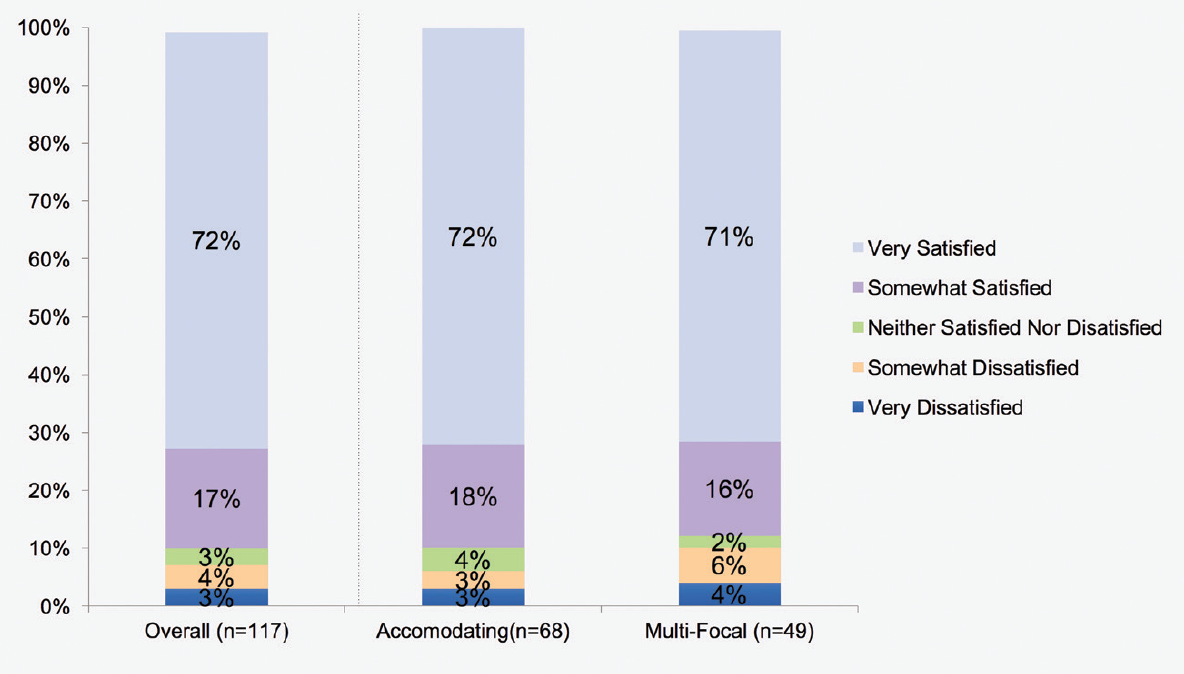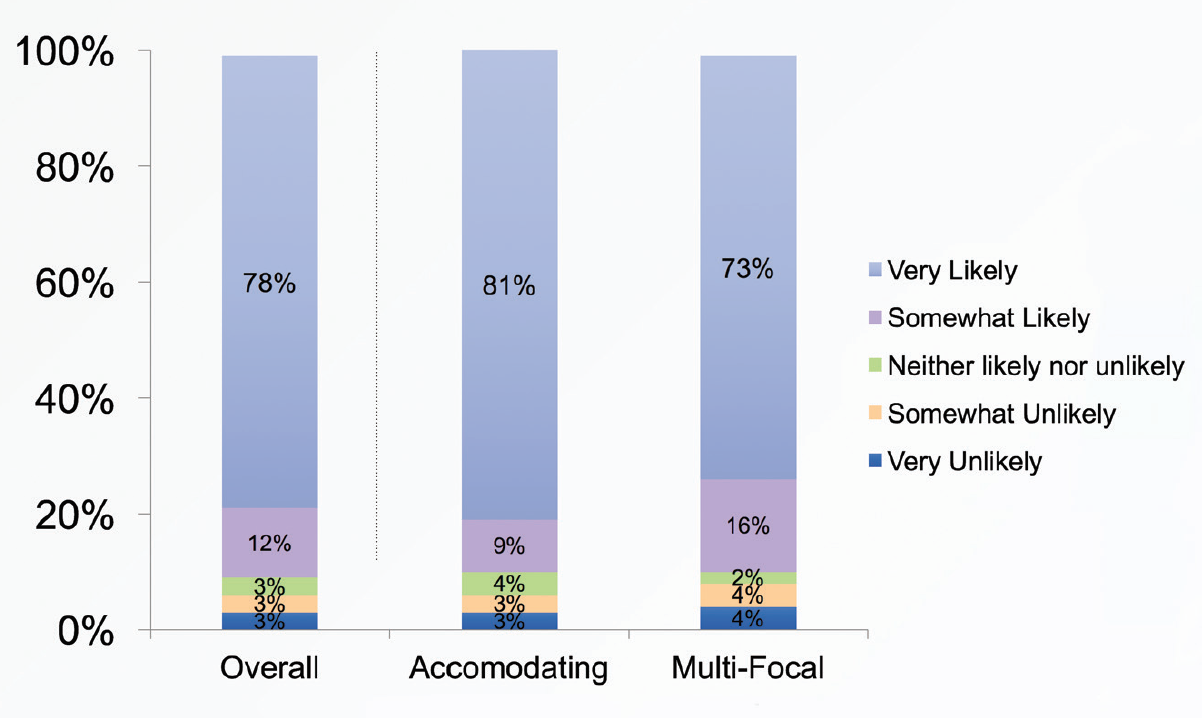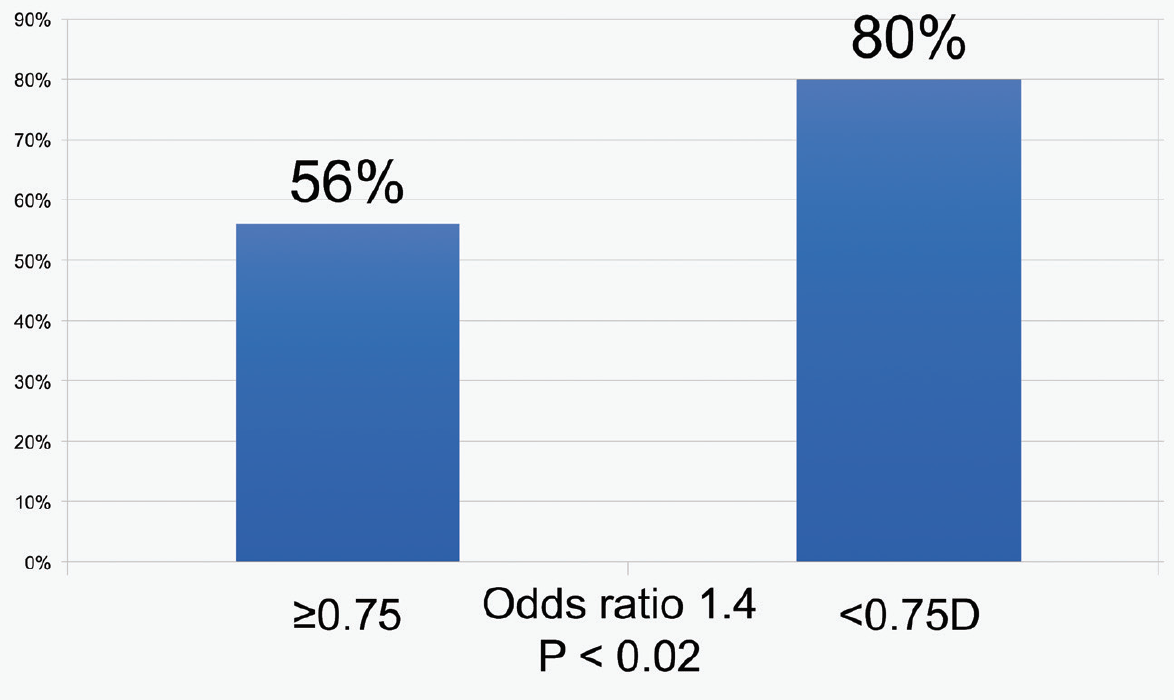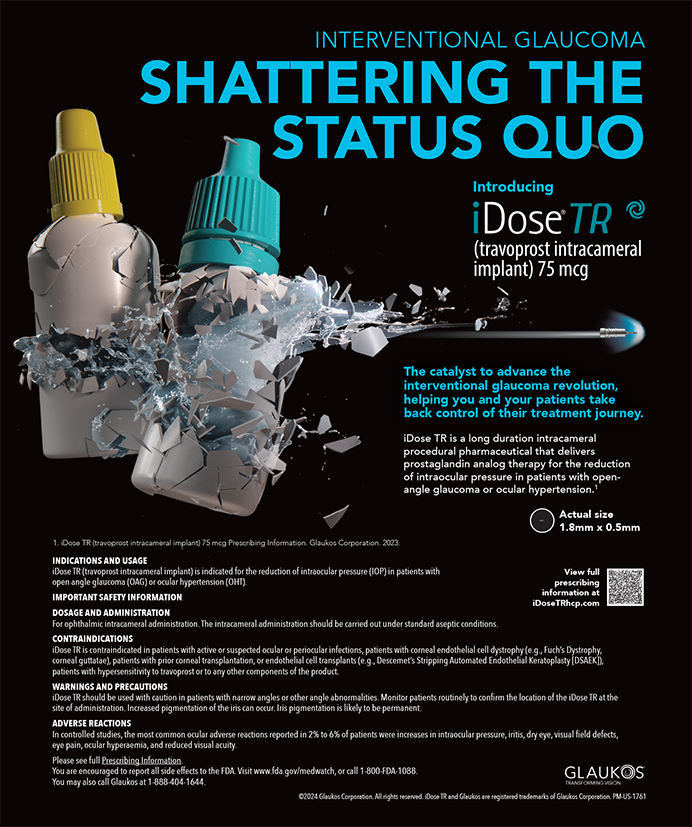
Patient satisfaction is paramount to practice success, and this is all the more so when it comes to premium IOLs. After surgery, patients are not interested in your refractive accuracy; they are interested in being happy with their postoperative vision. This is the paradigm we commonly refer to as 20/happy.
AT A GLANCE
- Just as patients have varying degrees of refractive error, their outcomes can vary as well. The potential equalizing element is satisfaction.
- A software program such as MDbackline can reach out and periodically check in with postoperative patients, making sure that they are doing well or allowing surgeons to initiate follow-up with them if they are not.
- In addition to helping maintain close contact with patients, the software can help to meet patient engagement requirements, boost reimbursement, and drive patient participation in social media.
Just as patients have varying degrees of refractive error, their outcomes can vary as well. The potential equalizing element is satisfaction. If patients are satisfied with their outcomes, then we have met their expectations.
However, as we all know, satisfaction means different things to different patients. Satisfaction is a subjective state of mind that cannot be measured in diopters. Given its importance to patients and the crucial role it plays in practice success, my colleagues and I set out to create a system that measures patient satisfaction and also rates postoperative visual performance.
ENGAGEMENT AND SATISFACTION
Our efforts resulted in the development of MDbackline (MDbackline), software that we first used in our office and then made available to colleagues. The cloud-based app engages patients through email with educational materials, questions, and reminders.
We have used this system to gather data during the past several years, and it has helped us to identify some interesting findings. For instance, a study of premium IOL outcomes revealed that, at 5 years postoperative, patients who had accommodating IOLs were just as satisfied with their vision as patients with multifocal IOLs. This was surprising, given that there is an almost universal perception among practitioners that patients with accommodating IOLs do not fare well over time because of refractive shift or other issues that are not clear. Of 224 patients recruited to that study, 117 had no other significant ocular morbidity to reduce vision. Of those 117 patients, 68 had an accommodating IOL and 49 had a multifocal IOL. About 90% reported that they were satisfied with their vision at a mean 5.4 years after surgery. There were no significant differences between lens types, and 90% said they would refer friends or family for the same procedure (Figures 1 and 2).1 The questionnaire we used in the study was administered by MDbackline.

Figure 1. About 90% of patients in both accommodating and multifocal IOL groups reported that they were somewhat satisfied or very satisfied with their vision at a mean 5.4 years after surgery.

Figure 2. In both accommodating and multifocal IOL groups, 90% of patients said they were somewhat likely or very likely to refer a friend or family member for the same procedure.
We have also gathered confirmatory findings regarding premium IOLs via MDbackline. One such study looked at factors that correlate with satisfaction after surgery. Not surprisingly, the strongest correlation was between residual refractive error and satisfaction. The closer a patient’s postoperative refraction was to plano, the happier he or she was. We confirmed that patients with more than 0.75 D cylinder tend to have a significant drop in satisfaction (Figure 3).2

Figure 3. After surgery, satisfaction was higher among patients with less than 0.75 D of postoperative astigmatism than those with 0.75 D or more (n = 50).
FINDING POTENTIAL PROBLEMS
Even though happy patients outnumber the unhappy, the unhappy ones have a disproportionate voice. We find that a happy patient tells three friends about his or her surgery, whereas an unhappy patient tells 10. Additionally, patients typically tell their friends that they are unhappy, but they do not tell us, which makes it hard to address their complaints.
At early follow-up visits after cataract surgery, patients may understate how bothered they are by blurring or glare. Usually these visual disturbances are caused by something that can be easily remedied with Nd:YAG laser application.
Our software program reaches out and periodically checks in with postoperative patients, making sure that they are doing well. If they are not, the system alerts us, allowing us to give them the care they need. This makes them enthusiastic referrers, rather than detractors.
For surgical patients, for example, MDbackline delivers several modules via email or text over time, at appropriate intervals. Preoperatively, they receive instructions on what to expect at surgery, and contact lens wearers get notifications telling them when they should stop wearing their lenses. Postoperatively, the patient gets a reminder to pick up the eye drops that we have prescribed. All of this is customizable for the patient, and it saves our staff the time they used to spend making phone calls to remind patients about essential self-care steps. As a result, we have fewer problems such as patients forgetting to remove contact lenses before a biometry visit, which means they have to return at another time for surgery—delays that are always time-wasters for patients and the practice.
HIDDEN BENEFITS
The principal feature of MDbackline is that it helps us learn how to better please patients by identifying those who are satisfied and the reasons for their satisfaction. At the same time, it is helpful on several other levels.
No. 1: It helps to maintain close contact with patients. In the current fiscal environment, physicians have to care for more patients in less time, and naturally we do not want to compromise our standards. MDbackline enables us to maintain close contact with patients without picking up the phone to call them or scheduling time for a visit. It enables us to automate care, but does so in a way that engages and supports our patients. Patients see the reminders and prompts as so-called touch points. We have found that people want more touch points with their physicians, and this fulfills that need.
No. 2: It helps to meet patient engagement requirements. All messages generated by MDbackline are sent through a secure system that is compliant with Health Insurance Portability and Accountability Act regulations. This helps us to meet patient engagement requirements under the Medicare Access and CHIP Reauthorization Act and the Merit-based Incentive Payment System.
No. 3: It can boost reimbursement. In my practice, we also use this program to get 2% to 3% better reimbursement from insurance companies. We are able to do this by taking the patient satisfaction and patient-reported outcomes information generated by MDbackline to the insurance companies we deal with. During contract negotiations, we ask “What other practices can present you with data like this?” The answer is “no one,” because, unless practitioners are using our system, no one is systematically polling patients for satisfaction and outcomes information. The quality of the data we can provide justifies not just being on an insurance panel, but being on that panel with preferred status and preferred payment terms.
No. 4: It helps to drive patient participation in social media. Another benefit for us is the ability to use patient feedback to drive social media participation. When patients report through MDbackline that they are happy with our treatment, we invite them to go to social media sites such as Yelp and Healthgrades to review us. The MDbackline system provides links that take them exactly where they need to go to supply comments.
This is helpful for two reasons: First, patients typically visit review sites more often when they are unhappy, but this disrupts that pattern by putting happy patients directly on the path to providing positive reviews. Second, for patients who are unfamiliar with social media sites, the software simplifies the process by providing a one-click link.
For people who are leery about drafting online reviews, the software gives them the alternative of writing a note to our staff. We get scores of positive notes from patients to our staff members and our physicians saying how happy they are with their improved vision. This is one of the soft benefits of the program that we really enjoy: We tend to focus our attention disproportionately on the small percentage of patients who do not get the outcomes we and they wanted, but most of our patients do well and are grateful for our care. Seeing their positive feedback means a great deal to us.
CONCLUSION
The MDbackline system enables us to track and analyze our results, increase our reimbursement, comply with federal regulations, and keep in close touch with our patients to make sure that they are getting the best treatment that we can offer.
1. Hovanesian J. Satisfaction and spectacle independence with accommodating IOLs versus multifocal IOLs 2 years after surgery. Paper presented at: American Society of Cataract and Refractive Surgery Annual Meeting; May 6-10, 2016; New Orleans.
2. Hovanesian J. Preoperative and surgical factors that correlate with the highest patient-reported satisfaction with multifocal IOLs. Paper presented at: American Society of Cataract and Refractive Surgery Annual Meeting; April 19, 2015; San Diego.




